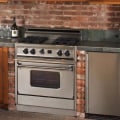When remodeling a kitchen, one of the most common questions homeowners face is whether to install kitchen cabinets or hardwood floors first. This decision can significantly impact the overall quality, durability, and longevity of the renovation. There are valid arguments for both approaches, but the best choice depends on factors such as flooring type, cabinet weight, budget, and the potential for future repairs. Installing the hardwood flooring before the cabinets allows for a seamless and uniform look, eliminating concerns about visible gaps or height inconsistencies. However, it can also lead to unnecessary material waste and added costs, especially if large, heavy cabinets are placed over the flooring, potentially causing dents, scratches, or even warping over time.
Benefits of Installing Hardwood Floors First
One of the primary reasons some contractors recommend installing hardwood flooring before the cabinets is the aesthetic appeal. When flooring is installed wall-to-wall, it creates a cohesive look, ensuring there are no awkward gaps or transitions between the cabinetry and the rest of the floor. This method is particularly beneficial in open-concept kitchens where the flooring extends into other areas of the home, maintaining a consistent design throughout. Additionally, if homeowners decide to change or reconfigure the kitchen layout in the future, having the flooring underneath the cabinets provides flexibility, making it easier to modify the space without the need for extensive repairs or patchwork. Another advantage of installing floors first is that it allows for a smoother, more level installation, as cabinets will sit on an even surface rather than relying on shims or adjustments to account for flooring thickness variations.
Drawbacks of Installing Hardwood Floors First
While installing hardwood flooring before the cabinets has aesthetic benefits, it also presents some potential downsides. One major concern is the risk of damage during the cabinet installation process. Heavy cabinets, appliances, and construction tools can dent, scratch, or scuff the hardwood surface, requiring touch-ups or refinishing before the project is complete. Additionally, hardwood expands and contracts with temperature and humidity changes, which means that if the flooring is installed underneath heavy cabinets, it may not be able to move freely, leading to buckling or gaps over time. Another consideration is cost efficiency. Installing hardwood floors throughout the kitchen, even under areas that will be covered by cabinets, increases material expenses unnecessarily. Since these sections of flooring will never be seen, some homeowners prefer to save on materials by only installing the hardwood in exposed areas.
Benefits of Installing Kitchen Cabinets First
For those looking to maximize their budget and reduce waste, installing kitchen cabinets before the hardwood floors may be the better option. This approach allows homeowners to purchase and install only the amount of flooring that is needed, eliminating unnecessary costs associated with covering areas that will remain hidden. Installing cabinets first also helps prevent flooring damage during construction, as the installation process involves heavy lifting, drilling, and securing cabinetry, all of which can put stress on the flooring. Furthermore, this method ensures that the weight of the cabinets does not restrict the natural expansion and contraction of hardwood, reducing the risk of long-term damage.
Drawbacks of Installing Kitchen Cabinets First
One of the main disadvantages of installing cabinets before the flooring is that it can lead to height discrepancies, requiring the use of shims or spacers to bring appliances, such as dishwashers and refrigerators, to the correct level. If flooring is added after cabinets are in place, it can create clearance issues, making it difficult to slide appliances in and out for maintenance or replacement. Additionally, if the kitchen layout ever changes in the future, homeowners may find themselves having to patch or extend the flooring, which can be challenging if the same type or color of hardwood is no longer available. This approach also requires precise planning to ensure that the final look remains seamless, as any miscalculations can result in visible gaps or uneven transitions.
Considerations for Waste Management During Installation
Regardless of which method is chosen, kitchen remodeling projects generate significant debris, including old flooring, cabinet materials, and packaging waste. Proper disposal is essential to maintain a clean workspace and prevent safety hazards. Many homeowners and contractors opt for dumpster rental in Round Rock TX to efficiently manage construction waste and streamline the cleanup process. Having a designated place to discard materials helps keep the project organized and ensures that all debris is disposed of in an environmentally responsible manner.
Conclusion
Deciding whether to install kitchen cabinets or hardwood floors first depends on multiple factors, including aesthetics, budget, and long-term maintenance. Installing floors first creates a uniform appearance and allows for greater flexibility in future renovations, but it also increases material costs and risks potential damage during cabinet installation. On the other hand, installing cabinets first saves on flooring expenses and protects the hardwood from construction-related damage, though it may lead to height inconsistencies and future flooring challenges. Ultimately, homeowners should weigh these factors carefully and consult with a professional contractor to determine the best approach for their specific kitchen layout and renovation goals. By planning ahead and considering all variables, homeowners can ensure a smooth installation process and a kitchen that remains functional and visually appealing for years to come.


